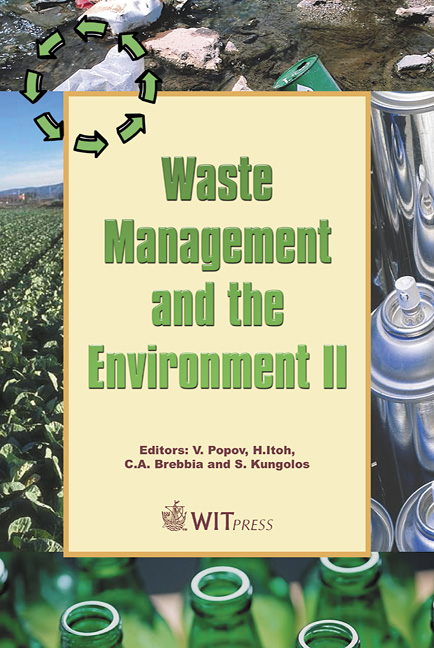Recycling Possibilities Of Spent Potlining From The Aluminum Industry
Price
Free (open access)
Transaction
Volume
78
Pages
10
Published
2004
Size
348 kb
Paper DOI
10.2495/WM040341
Copyright
WIT Press
Author(s)
N. Samec, D. Mikša & F. Kokalj
Abstract
Spent potlining (SPL) from aluminum reduction cell cathodes presents a major environmental concern in the primary aluminum industry. After laboratory tests it has been found that leaching cyanide and fluoride compounds present a major problem of SPL disposal. On the basis of the laboratory investigations, the possibilities of material and energy utilization of SPL have been studied. It has been concluded that SPL refractory material can be utilized directly in red brick manufacturing. A pilot test of the energy utilization of 25 tonnes of SPL carbon waste mixed with green petrol coke in a cement kiln has been performed. Additionally, the energy utilization possibility of SPL carbon waste in a coal thermal power plant have been investigated. Keywords: re-use, spent potlining (SPL), red bricks industry, cement industry, co-combustion in thermal power plant. 1 Introduction Aluminum is produced by the electrochemical reduction of alumina dissolved in fused cryolite (Na3AlF6) at temperature of 950 °C. This process is called the Hall-Heroult process, named after its inventors. It is the only method applied nowadays for industrial primary aluminum production. At the end of the electrolysis cell (Figure 1) lifetime every 5 to 8 years it has to be shut down. Apart from the anodes, the bath, the metal and the bars, the material left is the cathode and is composed of: • 55 % carbon cathode (referred also as "first cut"), • 45 % refractory material (termed also as "second cut").
Keywords
re-use, spent potlining (SPL), red bricks industry, cement industry, co-combustion in thermal power plant.





